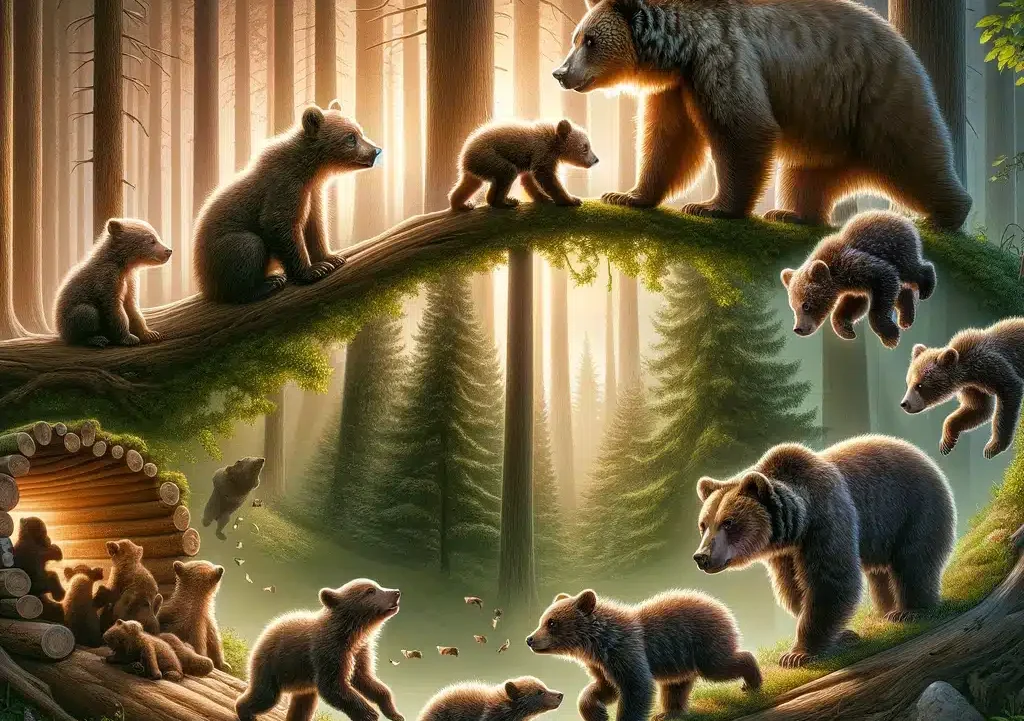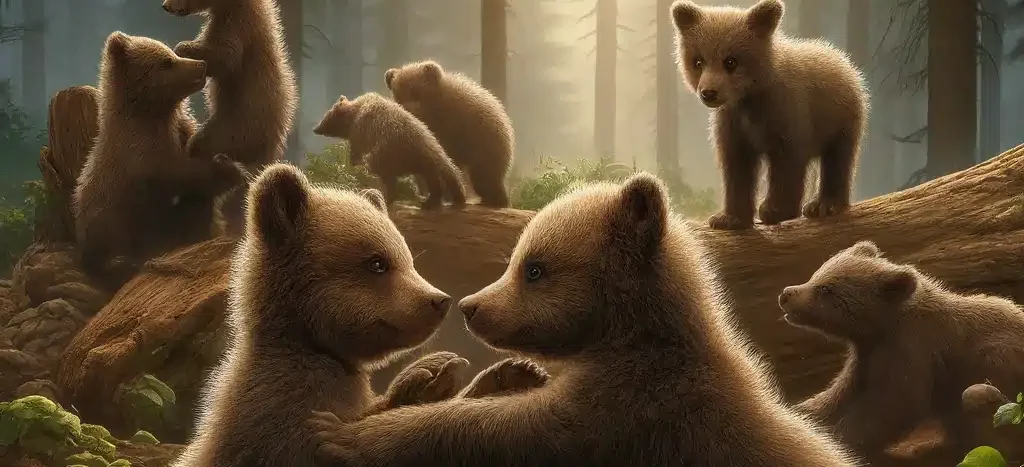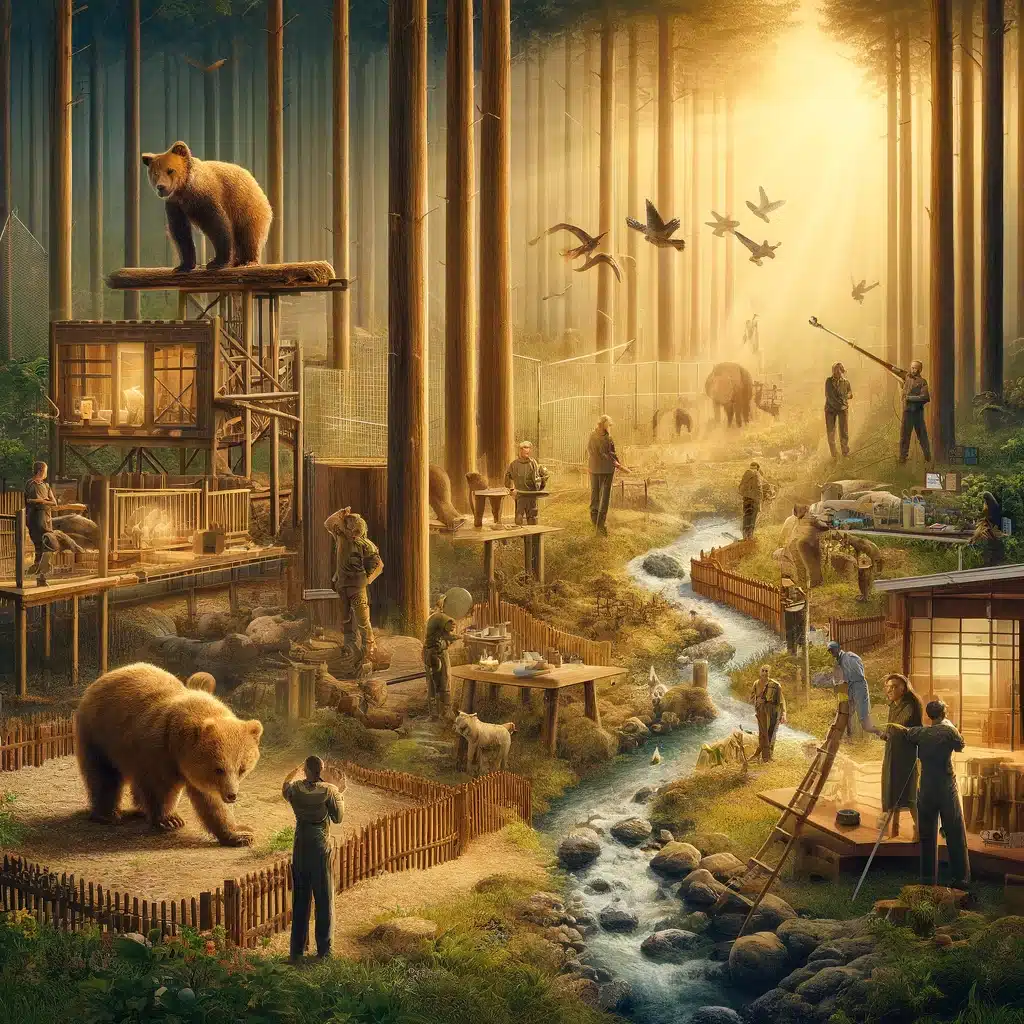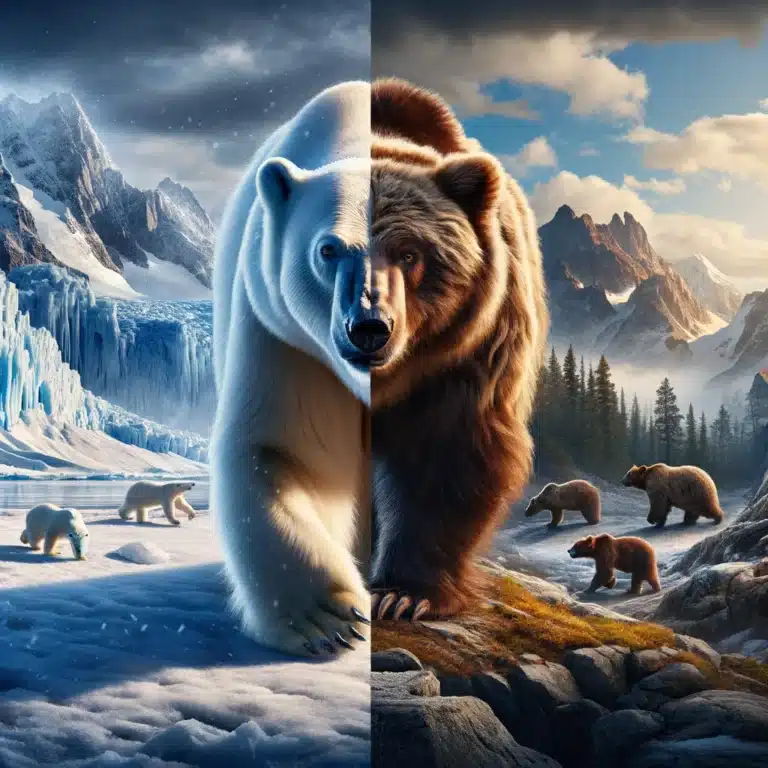Cuddly, clumsy, and full of playful energy – bear cubs are undeniably cute. But beyond the ‘aww’ factor lies a fascinating story of survival and learning.

This blog post will be your guide to the world of bear cubs, exploring their development, playful interactions, and the challenges they face in the wild. Buckle up, because we’re about to venture into the adorable yet wild world of these tiny titans in training!
Introduction: Aww-some But Wild!
Imagine a tiny ball of fur, wobbly on its legs and full of wide-eyed curiosity. This isn’t your average house pet – it’s a bear cub, the adorable offspring of some of the world’s most powerful mammals.
While their playful antics and clumsy attempts to mimic their mothers capture our hearts, there’s more to these cubs than meets the eye.
This blog post will be your guide to the fascinating world of bear cubs. We’ll delve into their development, from helpless newborns to independent young bears.
We’ll explore the importance of play in their survival, the playful interactions between cubs and their mothers, and the unique challenges these furry bundles of joy face in the wild. So, buckle up, because we’re about to venture into the adorable yet wild world of bear cubs!
Tiny Titans in Training: The Lifecycle of a Bear Cub

The arrival of bear cubs depends on the species. Polar bears, for example, give birth in the heart of winter, while grizzlies welcome their young in the spring. Regardless of the season, newborn bear cubs are tiny and incredibly vulnerable.
Imagine a human baby weighing only a few pounds – about the size of a newborn polar bear cub! Despite their small size, these cubs are born with a fighting spirit and powerful survival instinct.
The mother bear plays a crucial role in the cub’s early life. She provides them milk, keeping them warm and nourished in their den or explorations. Her constant presence offers protection from potential threats and teaches the cubs valuable lessons about their environment.
As the cubs grow, they become increasingly mobile and curious. Weaning typically occurs around 4-6 months, depending on the species, and the cubs transition to a diet that mirrors their mother’s – whether it’s berries and insects for black bears or fish and seals for polar bears.
This period is a crucial time for learning, and the journey from helpless newborn to independent young bear is just beginning.
Playing for Survival: The Importance of Cub Play

Those adorable wrestling matches and playful chases between bear cubs aren’t just for fun – they’re essential for survival. Play is a crucial part of a cub’s development, helping them hone essential skills they’ll need as adults.
Through play, cubs learn how to hunt, forage for food, and navigate their environment. They practice fighting techniques with their siblings, learning how to defend themselves and establish dominance. They also learn valuable social skills like communication and cooperation through playful interactions.
Even playtime with their mother offers valuable lessons. A playful swat from a mother bear teaches cubs about bite inhibition, while her playful chases help them develop their stamina and agility. So, the next time you see bear cubs at play, remember – it’s a vital part of their development, preparing them for a life in the wild.
A Risky World: Threats Faced by Bear Cubs

While undeniably cute, a bear cub’s world is far from a carefree romp through the woods. These young animals face several challenges that can impact their survival.
- Predators: While mother bears are fiercely protective, cubs are still vulnerable to other predators. Depending on the species and location, threats might include wolves, coyotes, or even larger male bears.
- Starvation: Finding food is vital, and young cubs are still learning the ropes. If food becomes scarce or the mother cannot provide enough for her cubs, they may face malnutrition or starvation.
- Accidents: Curious and energetic, cubs can sometimes get themselves into trouble. Falls, injuries from exploring rough terrain, or even drowning accidents can pose a threat to their survival.
Habitat Loss and Human-Wildlife Conflict
Beyond these natural challenges, human activity plays a significant role in cub survival. Loss of habitat due to deforestation and development disrupts natural food sources and can force bears closer to humans, increasing the risk of conflict.
Accidental encounters with humans or their property can lead to injuries or even the separation of cubs from their mothers.
Conservation Efforts: Protecting the Future of Bear Cubs

The survival of bear cubs, and ultimately bear populations, hinges on effective conservation efforts. Here’s how we can help:
- Habitat Protection: Supporting organizations that work to protect and restore bear habitats is crucial. Preserving natural areas ensures a steady food supply and reduces human-wildlife interactions.
- Reducing Conflict: Raising public awareness about responsible wildlife viewing practices can help minimize disturbances and accidental encounters with bears. Proper food storage when camping and avoiding areas with recent bear sightings are crucial steps in reducing conflict.
- Research and Monitoring: Understanding bear populations and their behavior through research and monitoring programs allows for better management strategies. This information is vital for protecting both bears and human communities.
By supporting these efforts, we can create a future where bear cubs can thrive in healthy habitats, ensuring the continuation of these magnificent animals for generations to come.
Fun Facts About Bear Cubs
Did you know? Bear cubs come with a surprising amount of cuteness overload and some fascinating facts:
- Vocalizations: Cubs communicate with their mothers through a variety of sounds, from whines and whimpers to playful chirps and barks.
- Unique Features: Depending on the species, newborn bear cubs might have unique physical features. Polar bear cubs are born with a layer of white fur, while panda cubs are born pink and hairless, developing their iconic black and white markings later.
- Weaning Champions: Compared to other mammals, bear cubs have a relatively long weaning period. Black bear cubs, for instance, might stay with their mothers for up to 16 months, learning essential survival skills before venturing out on their own.
These are just a few fun facts about bear cubs that showcase their playful personalities and remarkable adaptations.
Conclusion: Respecting the Bear Family

Bear cubs undeniably capture our hearts with their adorable antics. But as we’ve explored, their journey from helpless newborns to independent young bears is filled with challenges and requires incredible resilience.
Understanding these challenges and the threats they face is crucial for appreciating bears’ wild nature and the importance of respecting their space. Responsible wildlife viewing practices, supporting conservation efforts, and learning more about these fascinating creatures are all ways we can contribute to their future.
Remember, the next time you see a video of playful bear cubs or encounter a bear family in the wild, appreciate these young animals’ incredible journey. Let’s ensure that future generations can continue to witness the wonder of bear cubs – not just for their cuteness but for their vital role in the wild.




Very interesting topic, thank you for putting up.Blog monetyze